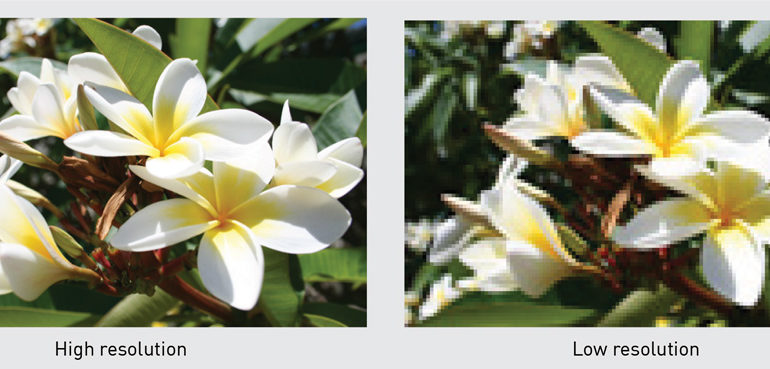Why good quality photos matter when you print, and how to get yours right

When you’re marketing your product or service, you only get one opportunity to engage your reader.
Images quickly get the reader’s attention – and keep it. They’re processed 60,000 X faster than text. So they work brilliantly as a memory trigger.
It’s why most print marketing materials use imagery to give context and highlight key messages.
Whether you use your own images, stock photos, or a professional photographer
Images should add value, not just fill space
- Choose images that reinforce and extend your message
- Don’t confuse the reader with irrelevant images
- Use eye catching images that appeal to your target audience
- Let your images do their work. Don’t drown them in text
Hopefully that all makes sense. But how can you have confidence that the quality of your image is good enough for print?
If you’ve chosen to source images yourself rather than use a professional photographer, here are my top tips.
Image Resolution
Why do images that look amazing on screen sometimes look terrible in print? Images sourced online are often blurry or jagged when printed, unless the printed image is very small. That’s because online images are displayed at 72dpi. To get a crisp result in print we usually need a resolution of 300dpi.
The term image resolution actually means how many pixels (squares of colour) will fit inside each square inch of paper when printed. So the printed size of the image matters.
Not sure if your image will be crisp enough? Try out this free tool
https://www.pictorem.com/checkprintsize.html
Should you use your own images for print?
Many small businesses use their own images in printed material, either for authenticity and immediacy, or to save money, or both. Images of people using your product or service can be very powerful. But it’s still important to use only images that are appropriate resolution for print, and to select with care. It’s easy to lose readers instantly, or worse still damage your brand, if your images look cheap.
Using Stock Photos – advantages and pitfalls
Online stock photo sites can be a fabulous resource if you’re smart. Avoid images that look bland or generic. Every image needs to tell a story that’s specific to your reader. Try to choose images that are consistent with your brand, and with a style that will appeal to your audience.
Remember the recommended 300dpi at correct size requirement when you download or purchase. Often you’ll be given options for different resolution and size versions of the image. If it’s a paid image and you select the wrong option, you could buy something that’s no use for print.
Stock photo super list – free and paid
Some stock photo sites are completely free, others with a combination of free and paid, and some with only paid images.


